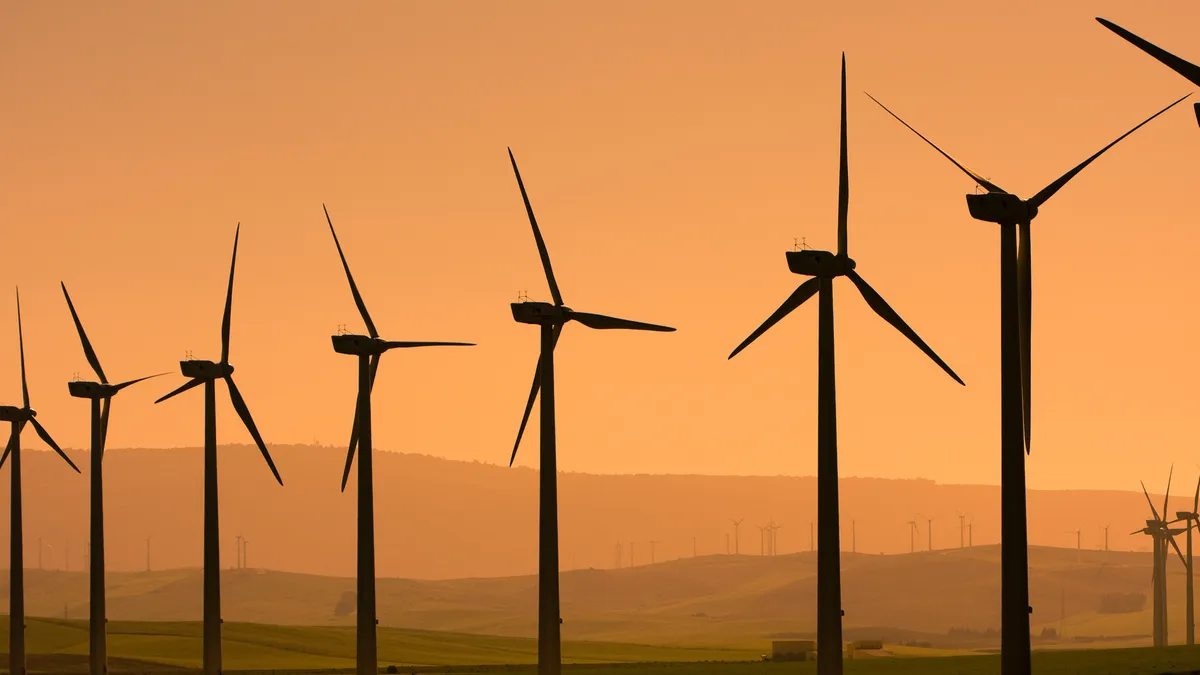Dive Brief:
- Wind energy may be the cheapest new energy source available, according to new research from Department of Energy labs, but the outlook for new installations remains uncertain because of the upcoming phaseout of the federal production tax credit (PTC).
- Wind energy prices have dropped to $20/MWh after hitting $70/MWh in 2009, according to the report, prepared by the Lawrence Berkeley National Laboratory (LBNL) for the U.S. Department of Energy.
- The three-year outlook is solid for the industry, expected to rise from 8 GW of installed capacity this year to 10-13 GW by 2020. After 2021, however, analysts expect a downturn as the value of the PTC declines.
Dive Insight:
The price of wind PPAs has fallen steadily in recent years, pushed by higher capacity factors, declining installed costs and record-low interest rates. But the federal PTC, which provides a $0.024/kWh credit for wind generation, "has also been a key enabler over time," LBNL's report notes.
That subsidy level won't persist, however. In 2022, the PTC is slated to be reduced to 60% of its current value, and in 2023 that will drop to 40%. Analysts expect it will affect wind deployment.
Forecasts for 2021 to 2025, "show a downturn in wind capacity additions in part due to the PTC phase-out," the report concludes. "Expectations for continued low natural gas prices, modest electricity demand growth, and lower demand from state policies also put a damper on growth expectations."
Limited transmission infrastructure and competition from natural gas and solar energy will also play a role in reducing new additions, LBNL wrote.
But for the moment, the wind industry is surging. While PPA price declines in the wind-abundant interior of the United States have been more modest, LBNL's analysts show the region has the lowest levelized costs of energy, with a 2017 average of $42/MWh and with some projects as low as $38/MWh.
Wind was 6.3% of U.S. generation last year, but regionally it can be much higher. It made up 54% of Texas generation one day in October last year. Wind and solar together provided 64.6% of California's power on May 26 of this year.
LBNL is not the only analysis pointing to a downturn for wind.
After 2021, "wind will struggle as it first fights full-subsidy solar ... then must compete on an unsubsidized basis with phase-out-subsidy solar PV and natural gas capacity additions from 2024 onward," analysis firm Wood Mackenzie predicted this month.
LBNL's research remains optimistic, however. While the PTC phaseout will be a drag on wind installations, researchers predict technological advancements and cost reductions mean the resource can continue to make strides. Additionally promising is the "burgeoning corporate demand for wind energy," and state renewable portfolio standards.
"Moreover, new transmission in some regions is expected to open up high-quality wind resources for development," LBNL said.















